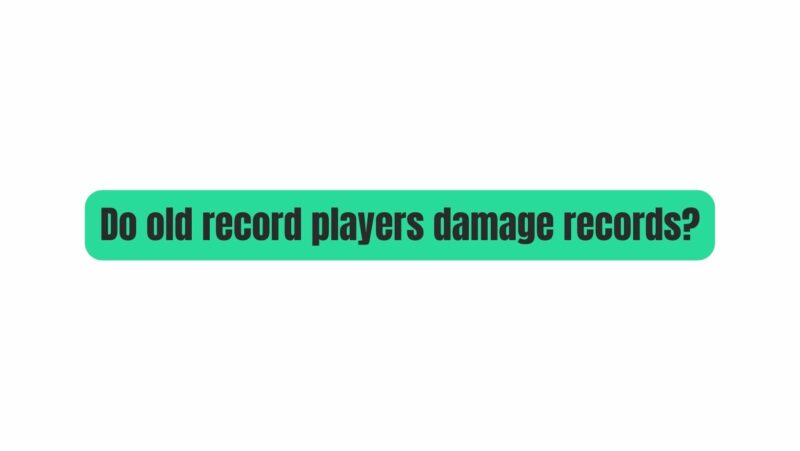Vinyl records, known for their warm analog sound, have experienced a resurgence in popularity in recent years. Many audiophiles and music enthusiasts have embraced the nostalgia of playing records on vintage turntables. However, concerns often arise about whether old record players can damage records. In this comprehensive article, we will explore the factors that can lead to record damage when using vintage turntables and discuss ways to mitigate these risks.
Understanding the Concerns
The potential for old record players to damage vinyl records arises from several factors:
- Stylus Condition: The stylus, also known as the needle, is a critical component that comes into direct contact with the record’s grooves. Over time, styluses can become worn, misshapen, or damaged. A worn stylus can dig deeper into the grooves, causing excessive wear and potentially damaging the delicate vinyl.
- Tracking Force: Tracking force refers to the downward pressure exerted by the stylus on the record’s surface. If the tracking force is set too high, it can place undue stress on the grooves, leading to distortion and groove damage. Vintage turntables may lack adjustable tracking force settings, making precise control challenging.
- Anti-Skating: Anti-skating is a mechanism that counteracts the natural tendency of the tonearm to move towards the center of the record. Proper anti-skating adjustment is crucial to prevent undue wear on one side of the groove. Some older turntables may not have effective anti-skating mechanisms.
- Misaligned Cartridges: Cartridges, which house the stylus, can become misaligned or improperly set up. Misalignment can cause uneven wear on the record’s grooves, affecting sound quality and potentially causing damage.
- Dust and Debris: Dust and debris on the stylus or the record’s surface can lead to scratches or surface noise during playback. Vintage turntables may not have advanced dust protection mechanisms commonly found in modern models.
- Worn or Misadjusted Belts: Turntables that use belts to drive the platter may experience belt wear or misalignment over time. A worn or misadjusted belt can result in inconsistent playback speed, affecting sound quality and potentially causing record damage.
- Condition of Records: The condition of the records themselves plays a significant role in potential damage. Records with existing scratches, dirt, or damage are more susceptible to further deterioration when played on a worn or improperly set up turntable.
Mitigating Record Damage Risks
To mitigate the risks of record damage when using old record players, consider the following steps:
- Regular Maintenance: Ensure that your vintage turntable is properly maintained, including regular cleaning, lubrication, and inspection of critical components like the stylus, tonearm, and belt (if applicable).
- Stylus Replacement: If your turntable has a worn or damaged stylus, replace it with a high-quality, compatible stylus to minimize groove damage.
- Proper Setup: Invest time in correctly setting up your vintage turntable, including proper alignment, tracking force adjustment (if possible), and anti-skating calibration.
- Clean Records: Clean your vinyl records before playing them to remove dust and debris. Use a carbon fiber brush or a record cleaning kit for best results.
- Controlled Environment: Store your records in a controlled environment with stable temperature and humidity levels to prevent warping and reduce the buildup of static electricity.
- Consider Modern Upgrades: If your vintage turntable lacks essential features like adjustable tracking force or anti-skating, consider investing in modern turntable components or a new turntable with advanced features.
Conclusion
Old record players have the potential to damage vinyl records if not properly maintained or if their components are worn or misaligned. However, with proper care, maintenance, and attention to detail, you can enjoy your vintage turntable without causing harm to your cherished record collection. Regular maintenance and upgrades can help ensure that your records not only sound great but also remain in excellent condition for years to come.


